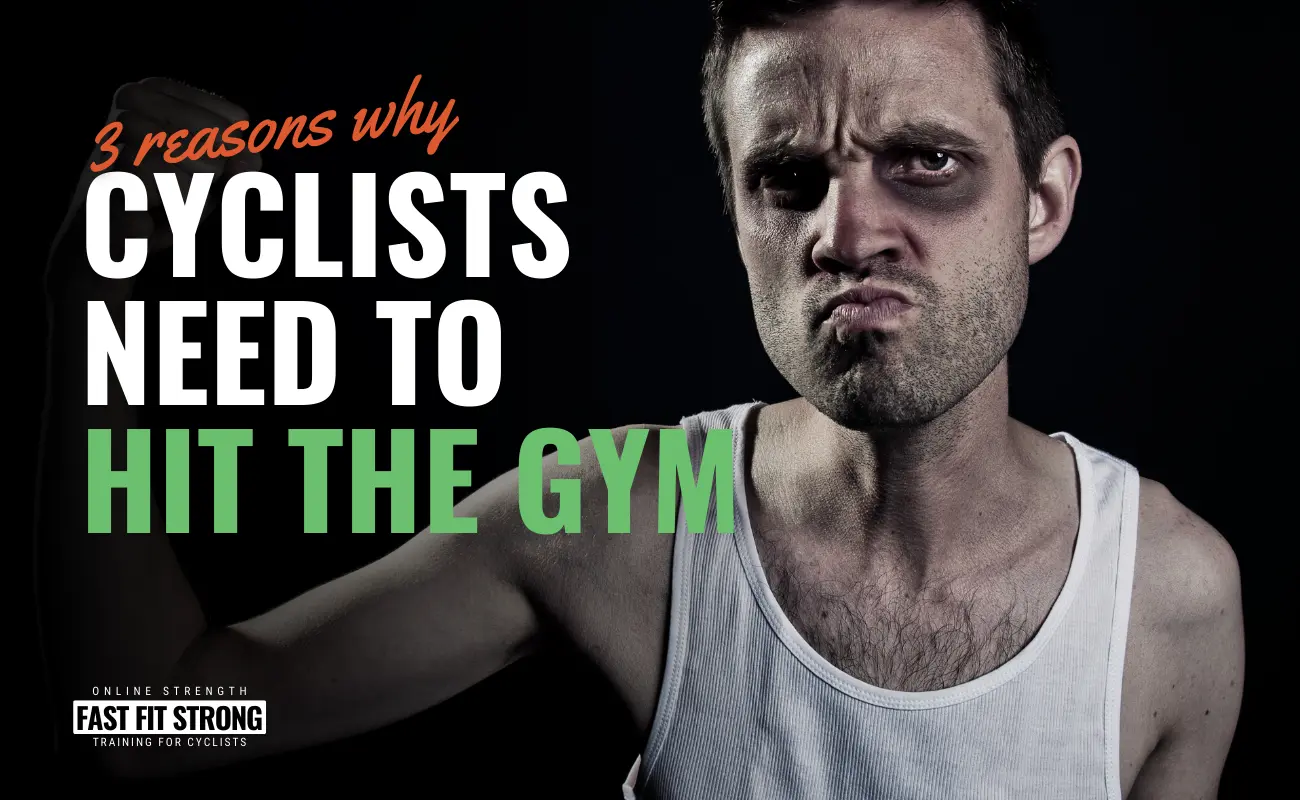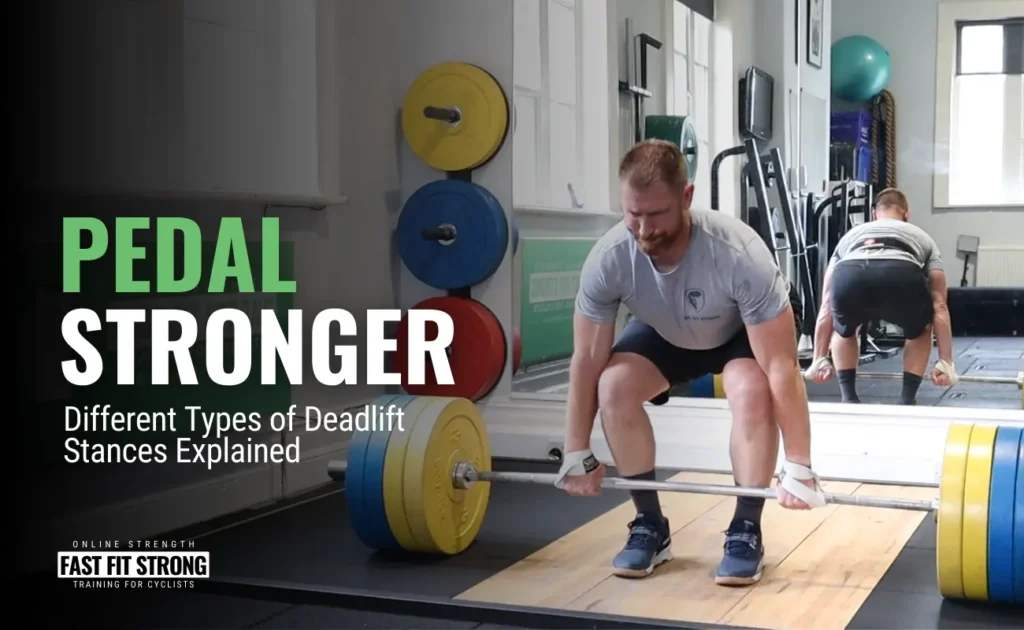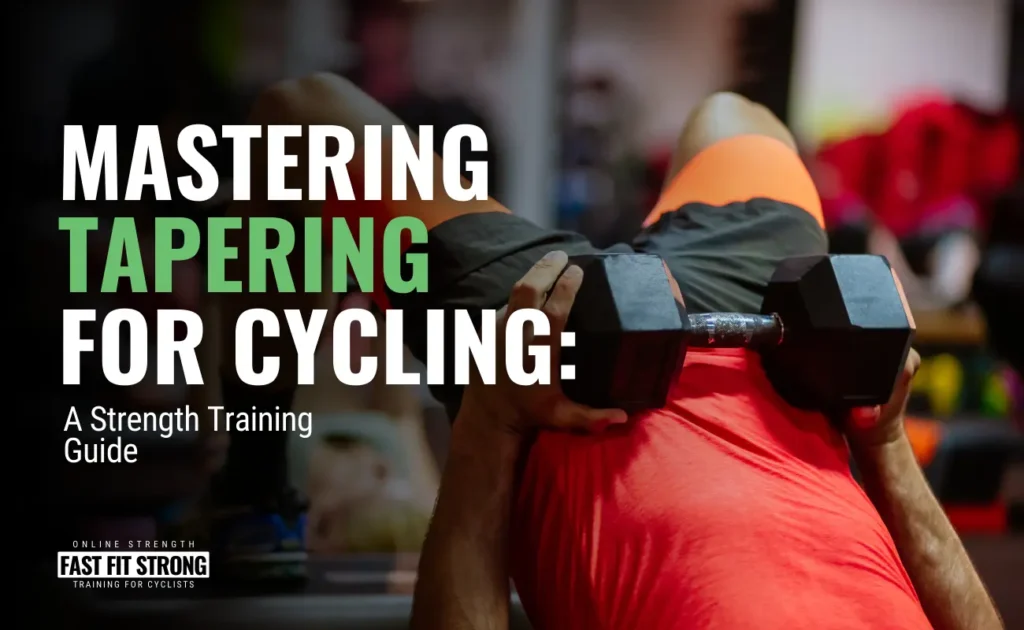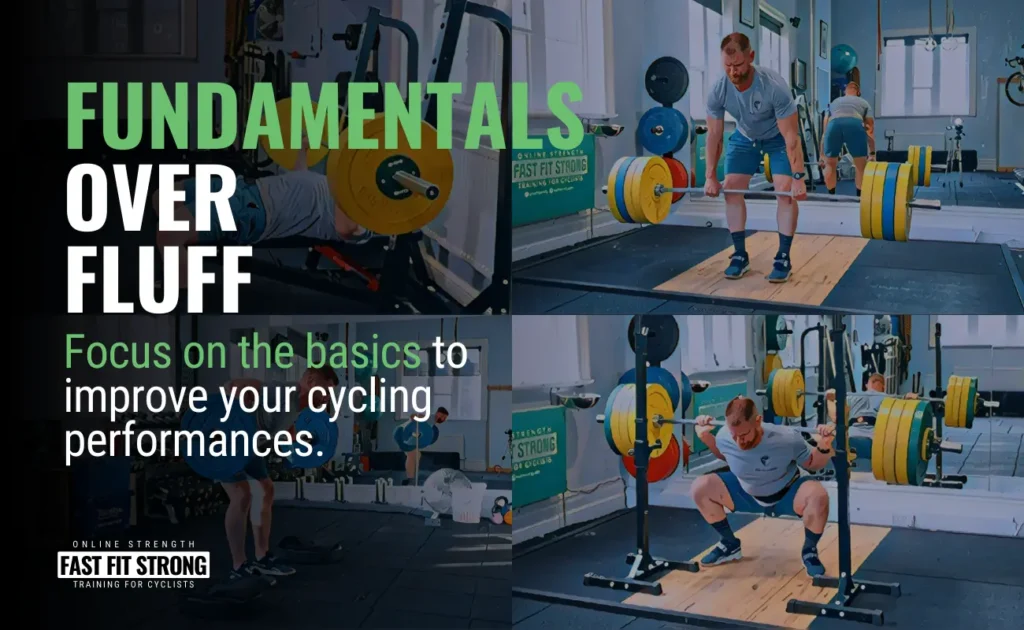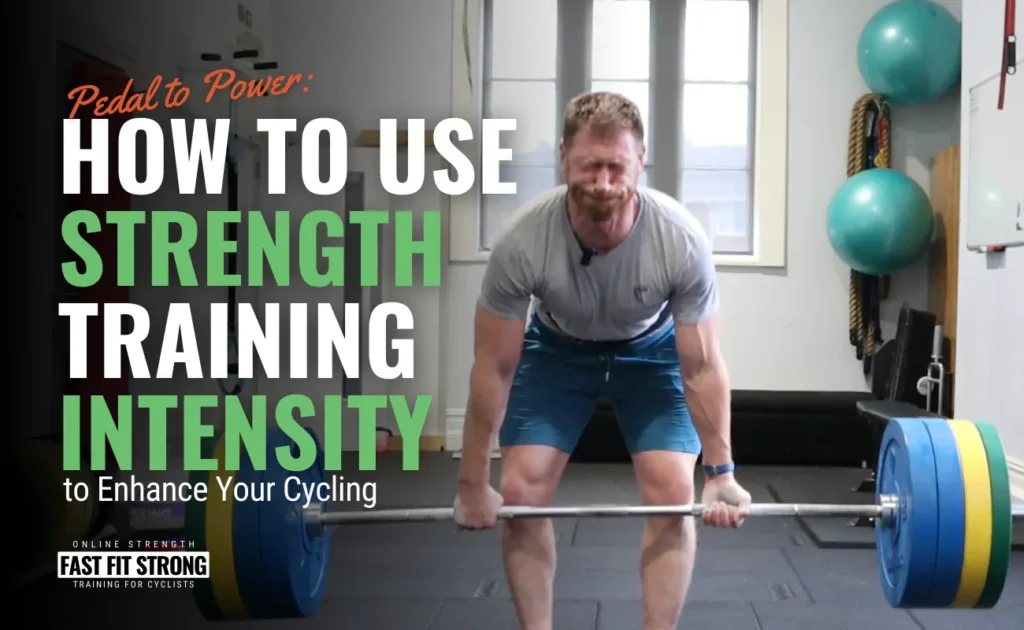Introduction
For athletes in many sports the need for strength & power is obvious; in my 15+ years coaching professional rugby players, elite track sprinters, BMX riders and footballers there is a clear and definite need to be stronger and more powerful than the opposition. But what isn’t quite so obvious is why endurance athletes, like cyclists need to hit the gym to improve their power and stay fast fit and strong on and off the bike.
Rugby players change pace and/or direction every 3 seconds, they need to smash rucks, mauls and scrums, as well as completing more than 10 tackles per game. The average Premiership rugby union match is similar to a head-on car crash at 30mph!
Track sprinters and BMX riders need to be hitting over 2500 watts if they are going to compete with the best, and even footballers need a good level of strength and power (I guess feigning injury and rolling around on the floor takes it out of you!).
If you’re an endurance cyclist, triathlete or runner the key determining factor is your cardiovascular endurance. That’s about as far away from strength & power as you can get and it seems counter-intuitive to think that lifting weights will help you improve in these activities but there is a wealth of evidence suggesting that it does; so why is it such an important tool in your training arsenal?
One misgiving I’ve experienced in my years coaching endurance athletes is that there is a misrepresentation of what strength training is, how it can be applied and what the benefits are. When we mention strength training most of us have an image of Arnold Schwarzenegger in our mind’s eye; there is an assumption that as soon as you touch a weight you will balloon up like a bodybuilder.
Nothing could be further from the truth!
Being strong does not equal being big and heavy; in fact, trying putting muscle mass on athletes is a difficult task, even ones specifically training for power events like track sprinters; so the likelihood of packing muscle on someone doing 10-15 hours of aerobic work per week is near impossible.
As an endurance athlete resistance training should be used for different reasons…
#1: General Health
By far the most important reason you need to incorporate strength work into your weekly routine is for your overall health and wellbeing. The benefits of resistance training go far beyond building muscle, here are a few of the benefits strength-training can provide:
Bone mineral density
Everyone knows about the health benefits of cardiovascular exercise, especially when it comes to heart health, but this type of activity can come at a cost. Prolonged endurance training has been shown to reduce the density of bones, making them more brittle and prone to breaking. This problem is compounded in swimmers and cyclists who have no ground impact.
I’ve seen athletes in their teens and early twenties with reduced bone density, so if you also consider that many endurance enthusiasts take up their sports later in life then there is a need to counterbalance this decline.
Metabolic rate
Aerobic exercise is seen as the way to burn calories and lose weight. If that were the case then every endurance athlete I see would be the very epitome of lean, and yet I would describe most as appearing a little chubby! Without naming names I’ve worked with world-class riders who, despite training like crazy, are a little on the chubby side.
How can this be, surely they’re doing the right training at the right times and the right intensities?
Of course, they are; their training was planned to the finest detail, but because of their continual exposure to an aerobic stimulus it has ceased to stimulate their metabolism. This, combined with the over-ingestion of carbohydrates (usually in the form of energy drinks and gels) leads to an increased amount of body fat.
It’s funny how most runners and riders are petrified of gaining any muscle-mass, yet seem happy to go around with excess non-functional mass!
Strength training increases both the size and number of muscle fibres. This increases the amount of energy (calories) required to maintain them and therefore fat is utilised to fuel this. Yes, there may be an increase in lean mass, but in my experience, most athletes actually lose weight when starting a strength-training program.
Mobility and flexibility
One of the drawbacks of endurance sports is that they all incorporate movements that require limited ranges of movement. While this is acutely safe, over time it leads to reduced joint mobility, which will -sooner or later- lead to injury.
Despite the outdated myth that lifting weights leaves you stiff and inflexible; strength training has been shown time and again to aid flexibility and mobilise joints. One of the main reasons for this is the need to move through full ranges of motion whilst moving heavy loads; this improves the health of your joints and allows your neural system to relax.
Mental health
Psychological wellbeing is a topic that is all over the news at the moment, and there are many thoughts as to the causes of conditions such as depression and anxiety, but a reduction in the amount of exercise people are doing has to be right up there.
In his excellent book “Spark: The Revolutionary New Science of Exercise and the Brain” author and psychiatrist John R. Ratey talks about the many different positive effects exercise has on the body and brain together.
Most people have heard of runner’s high, but not many people appreciate the benefits of strength training on their mental health. Resistance work can produce a similar endorphin release, but can also provide a number of other benefits. This is thought to be because of the increased blood flow to the brain, which provides oxygen and other nutrients to the brain cells during high-resistance activity.
Well structured strength-training programs provide a controlled, predictable environment, where there are regular opportunities to achieve goals and improve on previous performances far more than other types of activity.
#2: Reduce Injuries
One of the barriers I often encounter when encouraging endurance athletes to start a strength-training plan is that they can’t afford the time because it takes away from their running/riding time. While I can see this argument (to a point, and only if you completely ignore everything else in this article), it’s ultimately flawed.
As already mentioned, endurance sports typically involve the same cyclical action, that’s in one plane, involves a narrow range of movement that’s repeated over and over again for hours on end. This inevitably leads to some muscles working harder than others and being in a similar (less than perfect) position for prolonged periods of time. Then – you guessed it – you get injured, and that means long periods of time not training!!!
Here are some of the most common injuries from endurance sports 1.
| Cycling | Triathlon | Running |
|---|---|---|
| Lower back pain | Swimmer’s knee | Runner’s knee |
| Anterior knee pain | Plantar fasciitis | Achilles tendinitis |
| Shoulder pain | Fallen arches | Hamstring strains |
| Neck pain | Rotator cuff tendinitis | Plantar fasciitis |
| Muscle tightness | Hamstring strain | Shin splints |
| Saddle sores | IT band syndrome | IT band syndrome |
| Foot numbness | Shin splints | Stress fractures |
As an S&C coach in Premiership rugby some of the more common injuries I’d regularly see would be things like:
- Dead leg – from getting smashed in the leg
- Ruptured ACL – from getting smashed in the knee
- Dislocated shoulder – from trying to smash someone else in the leg
These are all acute injuries that I had little or no control over, but as you can probably see from the endurance injuries, they are all chronic injuries that stem from weakness or tightness, or both (muscle imbalance). The repeated movements mean that the joints take a hell of a beating; the shoulders, backs, hips, knees and ankles are not getting supported and ligament injuries and tendinopathies occur!
The good news is, if you suffer from any of them, there is something you can do about it. Start a strength program based on fundamental movement patterns and iron out the weaknesses!
Over time this has allowed my athletes to train for the sports they love MORE not LESS and what’s more, they have been able to do it at higher intensities and without pain.
#3: To Get better
Finally, we come to the reason many athletes are interested in beginning a strength plan in the first place – to make you faster. After all, that’s why you do the sport you love and why you keep training week after week; it’s to get better, right?
But how can resistance training improve your performances, when cardiovascular endurance is the polar opposite of strength & power?
Power output
In any racing event, from the 100m to an Ironman, the competitor with the highest average power will be the winner. So when you consider that:
Power = Force x Velocity
It stands to reason that performing training that improves your ability to produce force will also improve your power. Recent studies have shown that performing strength training combined with endurance-training improved peak and average power in a variety of efforts ranging from 30 seconds to over 3 hours better than performing endurance training alone 2,3,4.
It’s thought that these improvements could come from an increased lower-body lean mass (associated with 4-9% higher maximum mean power in female cyclists), an enhanced maximal speed and improved anaerobic capacity.
Efficiency and coordination
When I started working with professional cyclists in 2015, one thing I didn’t appreciate was how much of a skill the action of pedalling really was. After all, I “mastered” it around the age of four – how hard could it possibly be?
But if you actually think about it, it’s an incredibly complex action involving asynchronous contraction and relaxation of various muscle groups, which constantly changes at every point throughout the entire 360° revolution.
In addition to this, the force transmitted to the pedals varies in direction; effective pedalling isn’t simply pumping your legs up and down, but rather a circular action where the downstroke (30-150°) accounts for around 75% of the power produced 5,6.
Studies investigating the contribution to power output at different phases of the pedal stroke highlight that even experienced cyclists produce “negative torque” at higher cadences (>170 rpm), meaning that for portions of the revolution, they are effectively pedalling backwards!
To be able to achieve the highest possible power output a cyclist’s muscles would need to be able to instantaneously contract and then relax immediately, but this isn’t how muscles work. There’s a set time period in which each neural impulse and subsequent muscular action must occur, making the complex interaction of opposing muscle groups very hard to effectively coordinate at high cadences (>120 rpm).
So, you’d think that simply practising the skill of pedalling would be the way to improve this right? Well, that wasn’t what we saw during in-house studies at British Cycling. For most athletes, it seemed that more cycling actually fuelled the inefficiency, it’s kind of like they were practising doing it wrong; which makes sense if you think about it.
Resistance training on the other hand has been shown to improve coordination 7 by improving the neural adaptations to muscle groups and reducing the contributions of opposing muscle groups 8, especially when complex, multi-joint exercises, like squats, are used with relatively heavy loads 9.
Economy
The economy of exercise is defined as the oxygen required at a given, submaximal, intensity 10, 11, 12, meaning that the relative effort at that intensity is lower.
Think of travelling at 90 mph in a car with a top speed of 200mph vs a car with a top speed of 100mph. It’s obvious that the first car is working well within its capabilities, whereas the second car is working a lot harder, even at the same speed.
Studies have shown differences between athletes who strength train compared with ones who don’t; even when they are matched for other factors like body mass and VO2max. For example, a study in 2014 by Rønnestad and Mujika 4, showed a superior 5-min average power after 3hrs cycling in athletes that had done a heavy strength-training program before the event. Other studies have highlighted lowered heart rate after 2hrs cycling in triathletes 2 and maintenance of stride rate in long-distance runners 1.
It’s also interesting to see that these improvements were achieved without the athletes gaining weight 4, but to get these benefits it’s necessary to train often enough; as studies with lower strength-training frequency show little to no improvements 13.
It’s thought that these improvements come from increasing the stiffness of the muscles and tendons, allowing athletes to store and reuse elastic energy, thereby preserving the limited anaerobic energy stores for longer.
Putting it all together
If you care about feeling healthier, moving more freely, being injured less and being able to train and race faster and more often, then adding a well-designed strength-training program into your weekly schedule is definitely the way to go.
Do you do any kind of strength training and how has it affected your endurance performance? Let me know in the comments.
References
- B. Clarsen, T. Krosshaug, and R. Bahr, “Overuse injuries in professional road cyclists,” Am. J. Sports Med., vol. 38, no. 12, pp. 2494–2501, 2010, doi: 10.1177/0363546510376816.
- P. Aagaard and J. L. Andersen, “Effects of strength training on endurance capacity in top-level endurance athletes,” Scand. J. Med. Sci. Sports, vol. 20, pp. 39–47, 2010.
- O. Vikmoen et al., “Strength training improves cycling performance, fractional utilization of VO2max and cycling economy in female cyclists,” Scand. J. Med. Sci. Sports, vol. 26, no. 4, pp. 384–396, 2016.
- B. R. Rønnestad, E. A. Hansen, and T. Raastad, “Strength training improves 5-min all-out performance following 185 min of cycling,” Scand. J. Med. Sci. Sports, vol. 21, no. 2, pp. 250–259, 2011.
- M. Mateo, C. Blasco-Lafarga, and M. Zabala, “Pedaling power and speed production vs. technical factors and track difficulty in bicycle motocross cycling:,” J. Strength Cond. Res., vol. 25, no. 12, pp. 3248–3256, 2011, doi: 10.1519/JSC.0b013e3181f90847.
- A. S. Gardner, J. C. Martin, D. T. Martin, M. Barras, and D. G. Jenkins, “Maximal torque- and power-pedaling rate relationships for elite sprint cyclists in laboratory and field tests,” Eur. J. Appl. Physiol., vol. 101, no. 3, pp. 287–292, 2007, doi: 10.1007/s00421-007-0498-4.
- O. M. Rutherford and D. A. Jones, “The role of learning and coordination in strength training,” Eur. J. Appl. Physiol., vol. 55, no. 1, pp. 100–105, 1986.
- J. Douglas, S. Pearson, A. Ross, and M. McGuigan, “Chronic adaptations to eccentric training: a systematic review,” Sports Med., vol. 47, no. 5, pp. 917–941, 2017, doi: 10.1007/s40279-016-0628-4.
- W. J. Kraemer and N. A. Ratamess, “Fundamentals of resistance training: progression and exercise prescription:,” Med. Sci. Sports Exerc., vol. 36, no. 4, pp. 674–688, 2004, doi: 10.1249/01.MSS.0000121945.36635.61.
- P. U. Saunders, D. B. Pyne, R. D. Telford, and J. A. Hawley, “Factors affecting running economy in trained distance runners,” Sports Med., vol. 34, no. 7, pp. 465–485, 2004.
- B. R. Rønnestad and I. Mujika, “Optimizing strength training for running and cycling endurance performance: A review,” Scand. J. Med. Sci. Sports, vol. 24, no. 4, pp. 603–612, 2014.
- A. M. Jones and H. Carter, “The effect of endurance training on parameters of aerobic fitness,” Sports Med., vol. 29, no. 6, pp. 373–386, 2000.
- J. Mikkola, H. Rusko, A. Nummela, T. Pollari, and K. Hakkinen, “Concurrent endurance and explosive type strength training improves neuromuscular and anaerobic characteristics in young distance runners,” Int. J. Sports Med., vol. 28, no. 7, pp. 602–611, 2007.
